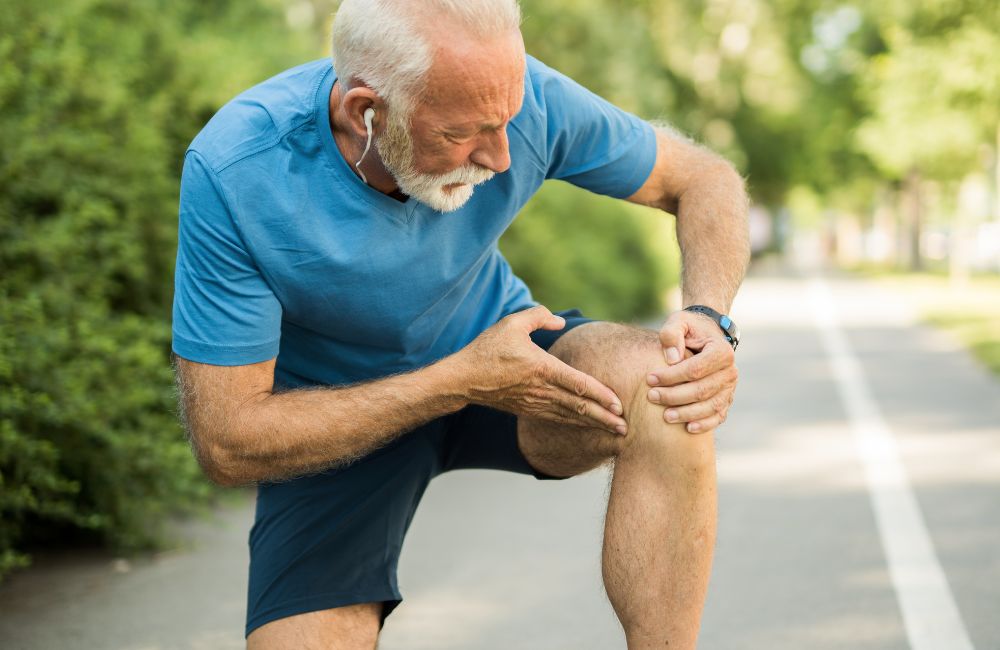
Suffering from knee pain can be debilitating. These exercises will help strengthen your knees and get you back on your feet.
The knees are vital to all daily movements like walking and running and even more so during workouts. Yet knee pain is incredibly common and affects people of all ages and demographics.
In fact, roughly 23% of the population reports having knee pain every year.
Fortunately, with just a few simple exercises, most people can reduce their knee pain or prevent it from ever occurring!
Why Is Knee Pain So Common?
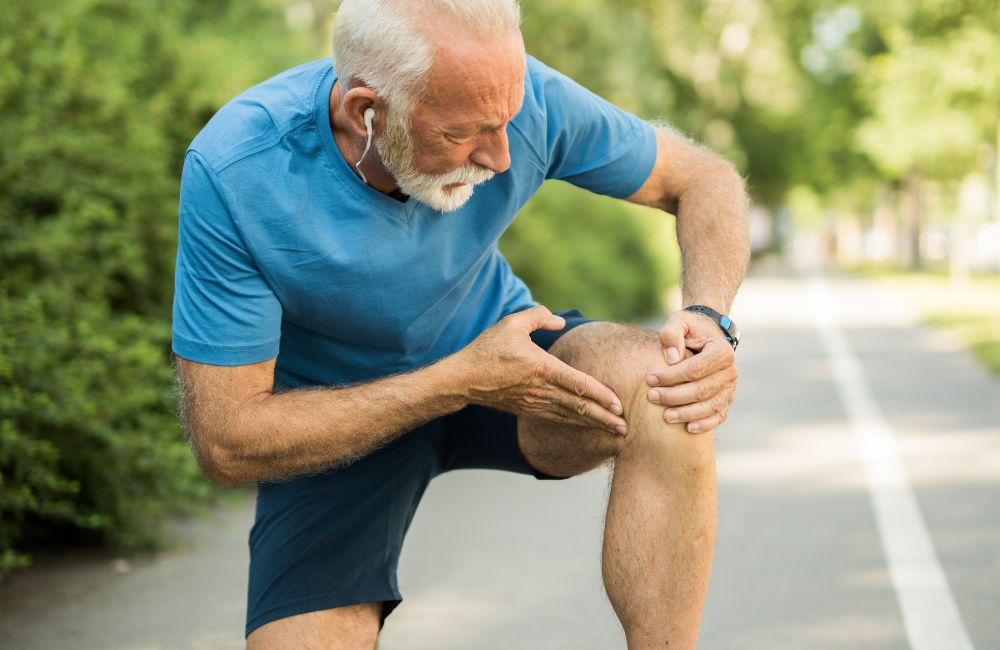
Knee pain can occur due to a variety of reasons. For example, people may experience painful knees as a result of any of the following:
- Trauma,
- Rheumatoid Arthritis,
- Obesity,
- Systemic Disease,
- Osteoarthritis or “Wear and Tear”.
Some of these causes of knee pain bear careful consideration. Truthfully, most patients suffering from painful knees due to Rheumatoid Arthritis or trauma would benefit most from seeing a physician or physical therapist.
But for many people, knee pain occurs due to wear and tear on the joints.
One of the best ways to keep the knee joint healthy is to promote as much strength and flexibility as possible through exercise.
How Can Exercise Help Prevent and Treat Knee Pain?
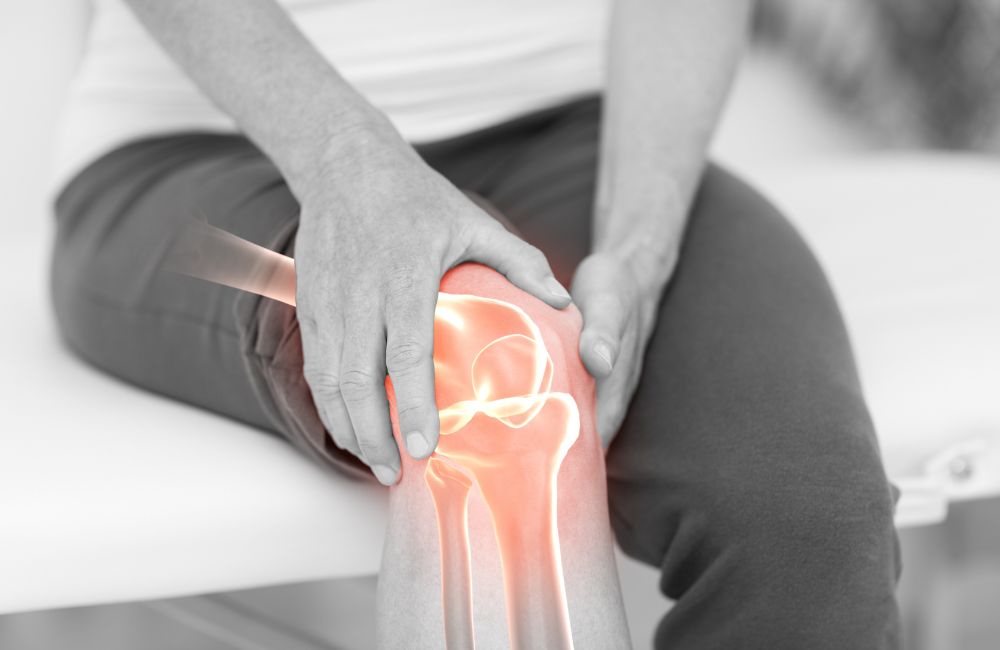
When muscles are weak and inflexible, the joints they are associated with can become painful and stiff. Conversely, when muscles are strong and mobile, joints tend to follow suit.
Exercise promotes blood flow to tissues throughout the body, which brings with it nutrients. These nutrients, in turn, help to strengthen and heal said tissues, decreasing pain and improving function.
Furthermore, strong muscles take the brunt of the force when you walk, run jump, or otherwise use your legs. With weak muscles, the joints are responsible for absorbing the entirety of these forces.
To recap, exercise strengthens muscles and other associated tissues, while also encouraging blood flow.
Therefore, when people regularly perform the following lower body exercises (along with cardiovascular exercise), they help to keep their knees healthy!
5 Best Exercises for Knee Pain
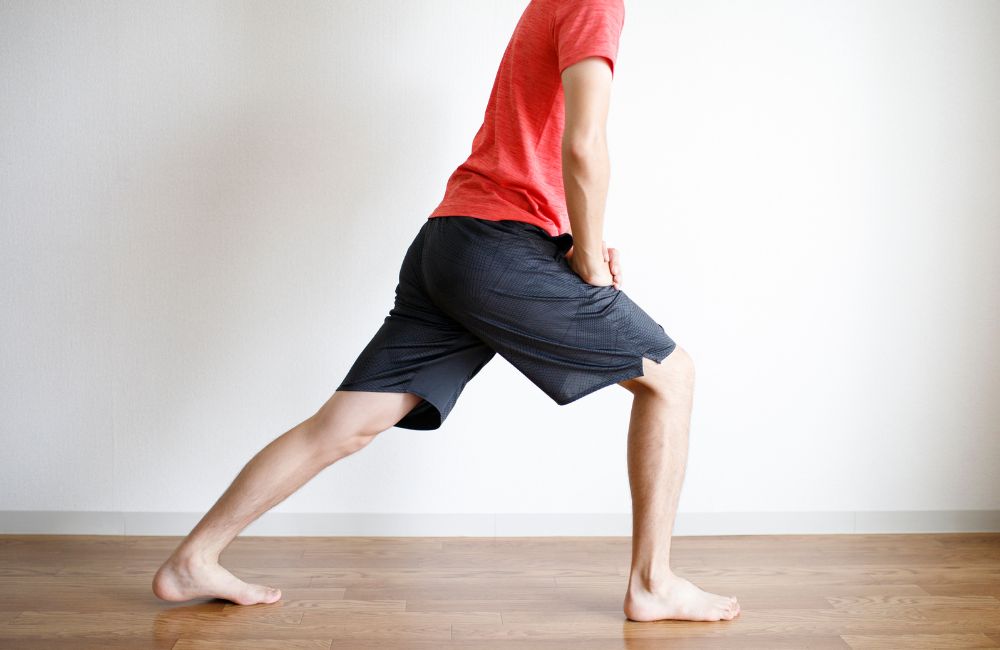
There are no guarantees when it comes to issues throughout the body. Everyone’s knee pain is unique.
For this reason, if you have been suffering from severe knee pain and haven’t been diagnosed by a medical professional, you should consult with one before trialing these exercises.
On the other hand, if you’re knee pain is fairly minor (less than 4/10 on a pain scale), these exercises may be perfect for you!
As you complete each of the following exercises, move slowly, maintaining perfect form the whole time. As you get stronger, the exercises will become easier and your knee pain should improve.
These exercises should be performed as follows (unless otherwise indicated):
- 10-12 reps per set.
- 3-5 sets per session.
- 2-3 sessions per week.
Ready to see what exercises I have in store for you? Let’s take a look!
1. Conventional Deadlifts
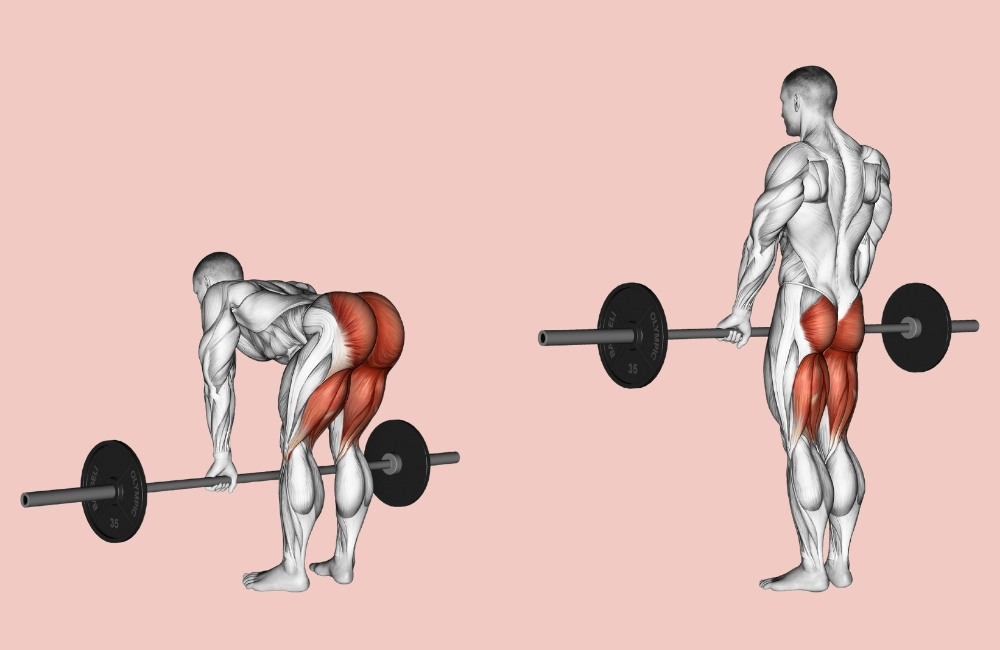
The deadlift is a phenomenal exercise for building overall strength throughout the lower body.
Better yet, there are tons of variations in the movement such as the sumo, Romanian, and hex bar deadlifts.
To bulletproof the knees and strengthen the lower body, I’ve chosen the conventional deadlift.
How to Perform:
- Grasp the barbell with a mixed grip (one palm facing forward, one facing backward) or with both palms facing backward.
- Bend your knees slightly, keeping your back straight.
- Stand up by squeezing your glutes and hamstrings hard (these should be the primary muscles of emphasis during this exercise).
- Reverse the motion and slowly lower the bar to the ground in order to complete the rep.
2. Lateral Tap Downs
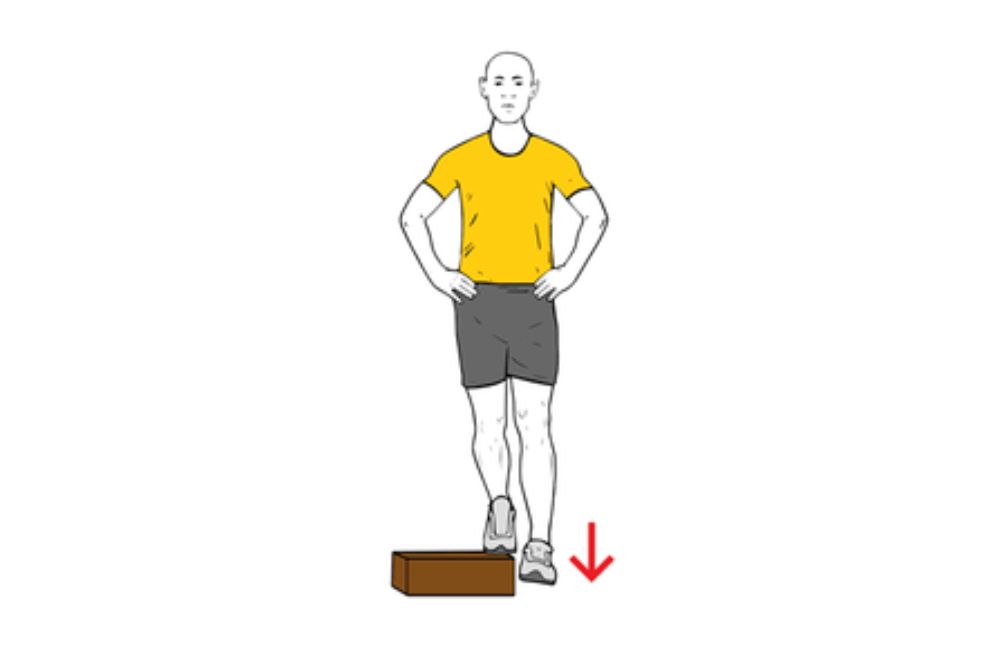
Every time I show this exercise to a patient, they are convinced that it’s going to be “easy as pie”.
However, once I’ve corrected their form and shown them exactly how it’s done, they feel a good burn in their quads and hip muscles.
When starting out with this exercise, be sure to choose a small step. The bigger the step, the harder the movement is!
How to Perform:
- Standing on an elevated surface, shift all of your weight onto one leg.
- Allow your other, non-supporting leg, to hang off the side of the elevated surface.
- Slowly, while keeping your hips from “dipping”, lower your hanging leg down towards the floor.
- Lightly tap the floor with your heel, then stand back up to the starting position to complete the rep. Complete all prescribed reps on one leg before moving on to the other one.
Common mistakes to avoid during this exercise include:
- Moving too fast.
- Stepping all the way down and taking the tension off of the leg you are working.
- Allowing your hips to “dip” down toward the hanging leg during the movement.
3. Side-Lying Straight Leg Raise
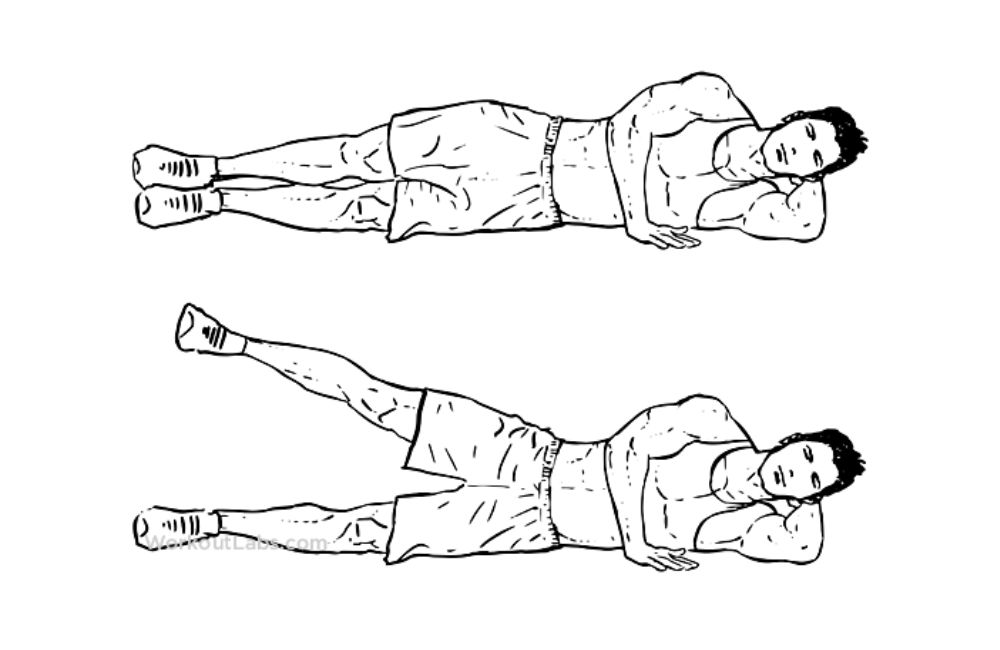
You may be confused by this exercise, as it barely involves the knee joint at all.
The side-lying straight leg raise focuses on strengthening the hip abductor muscles, which are responsible for maintaining the lateral stability of the knee.
You should feel a nice burn in your outer hip muscles as you complete this movement.
How to Perform
- Lying on your right side, ensure that your hips are in perfect alignment.
- Lift your left leg toward the ceiling slightly, ensuring that you don’t rotate your leg during the motion.
- Slowly lower your leg back down to the starting position to complete the rep.
- Perform the movement on both sides.
4. Isometric Lunges
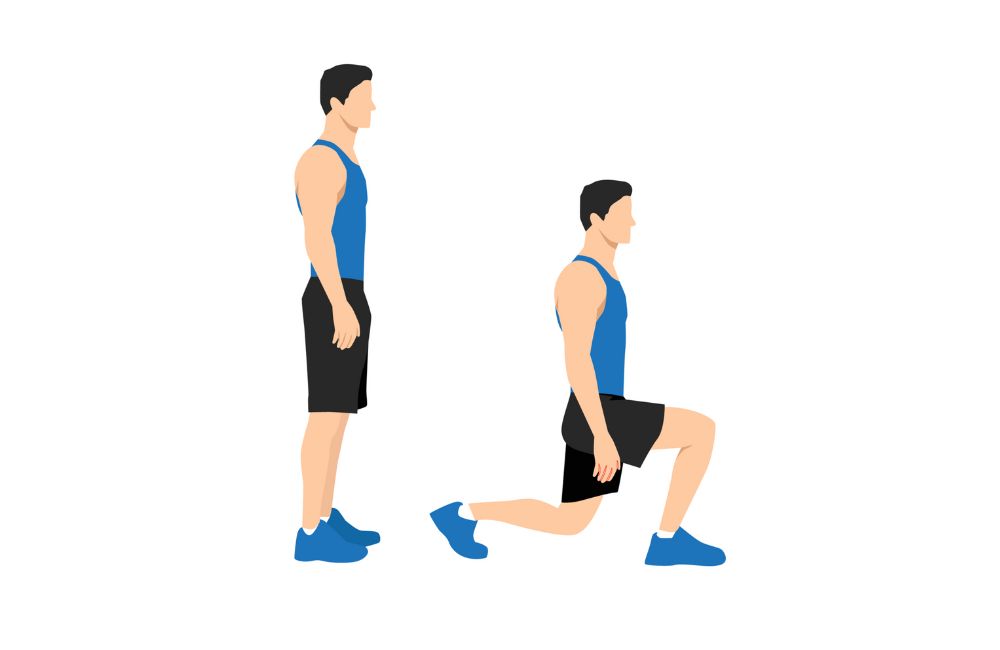
Lunges are a classic exercise that is included in many different programs. Lunges can be performed isotonically (this means that you perform traditional reps, up and down, at a steady pace).
Alternatively, as I’ll describe below, lunges can be performed isometrically.
This means that the contraction is held at a given range of motion for a period of time.
How to Perform:
- With your right leg a few feet in front of the left, bend your right knee until your left knee lowers to about an inch above the ground.
- Hold this position for 30-40 seconds, then return to standing.
- Repeat the movement for 10-12 repetitions per set, per leg. You only need to perform 1-2 sets of this exercise.
5. Wall Sits
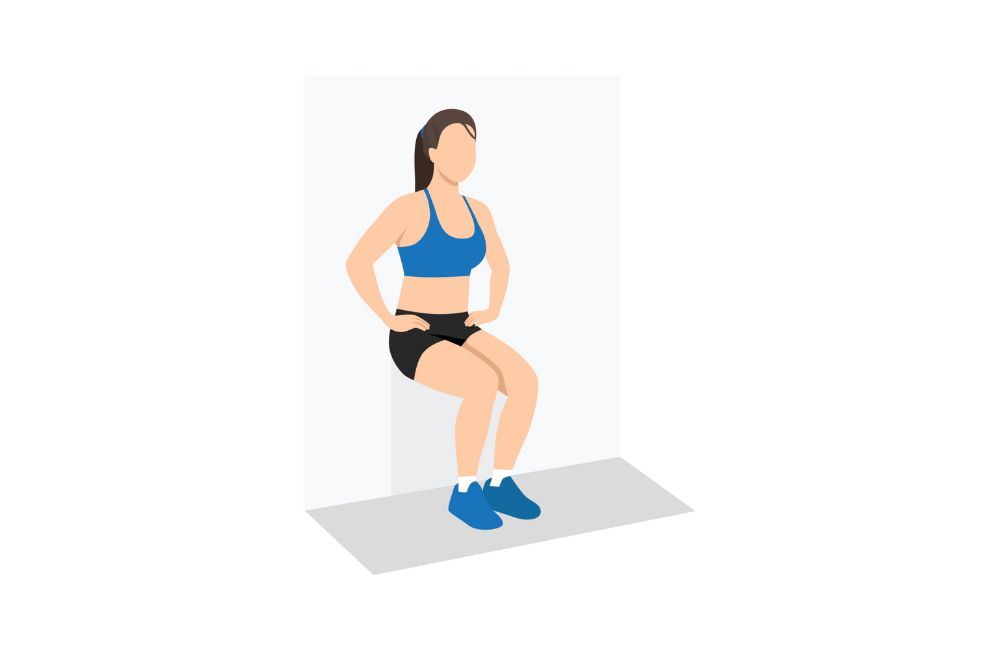
Wall sits are a gym class classic! This exercise has been around forever and has led to some epic battles of will as athletes try to outlast each other.
The wall sit, similar to the lunge, can be performed isometrically or isotonically. For our purposes, I’ll describe the isometric version.
How to Perform:
- Select a wall on which you can comfortably rest your back.
- With your feet about hip-width apart, slowly lower yourself down into a 90-degree squat position, with your whole back touching the wall.
- Hold this position for 30-60 seconds (or longer).
- Repeat for 10-12 reps per session.
- For this exercise, you only need to perform 1-2 sets.
Conclusion
Knee pain leads many people to their orthopedic doctor’s office every year. Admittedly, in some cases, you may need the guidance of a doctor or physical therapist.
However, many instances of knee pain can be resolved with simple exercises, such as those described in this article.
If you want to improve the health of your knees, try out these 5 exercises and see what you think!


